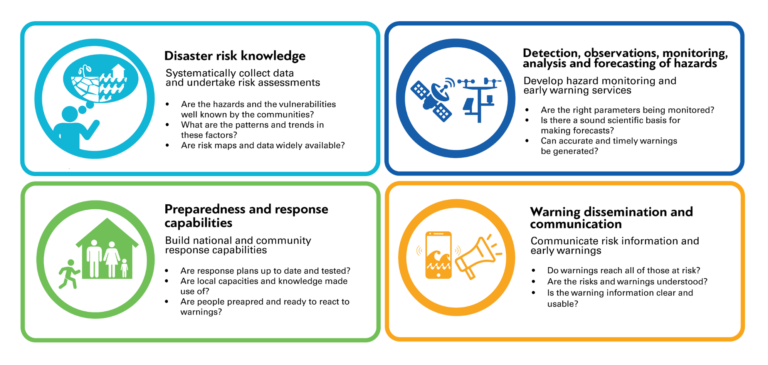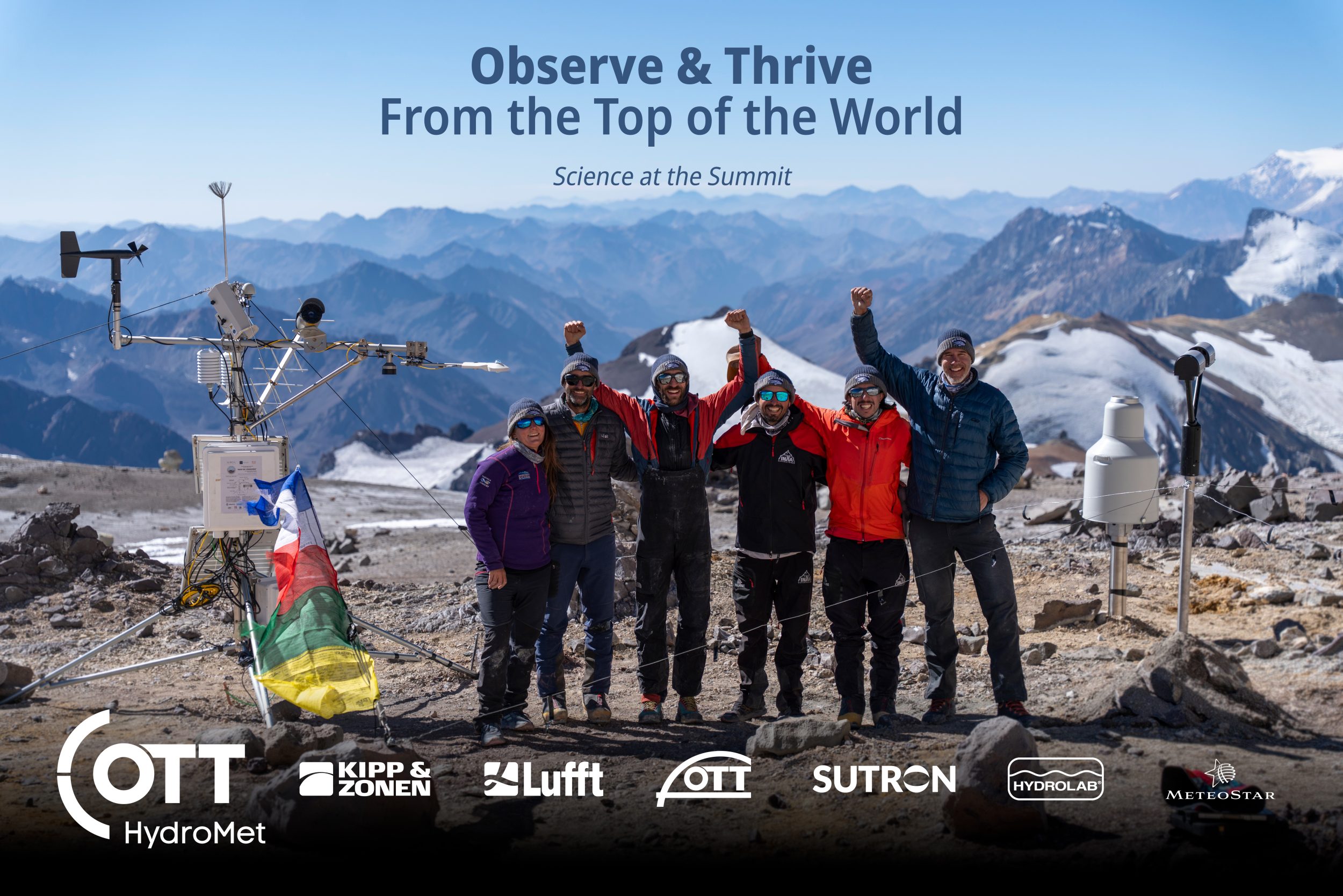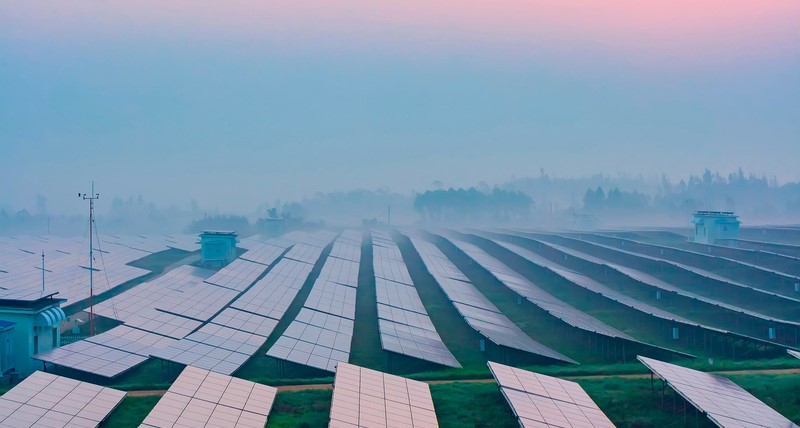Amongst political unrest, COVID-19, and the continued threat of climate change, 2023 is shaping up to be yet another unprecedented year. As we look to the horizon, one thing is guaranteed, there will be no shortage of challenges to overcome in the environmental monitoring industry. To gain better insight into the evolving landscape, we combined global data and market research to synthesize the top three watershed monitoring trends to keep an eye on in the new year. Here we explore the trends, associated challenges, and how OTT HydroMet plans to rise to the occasion. Let’s dive in!
3 Trends to Watch in 2023
1) Localization & Network Densification for Improved Modeling
Of the challenges our customers are facing, a push for more data is a clear front-runner. Organizations are being pressured to produce more spatial, or geographically represented, data in their networks. The concept is that accurate flood warning, water availability prediction, and overall water resource management is improved by fueling models with more diverse data sets. However, achieving this is easier said than done. Data collection, transmission, and management require knowledgeable personnel and seamless integration to handle the influx of data. Despite atmospheric and hydrologic conditions that cross borders, a spectrum of both network maturity and data availability exists around the globe. There are different data needs for network improvement as climate, budget, and infrastructure vary.
In underserved parts of the world, communities strive to establish and maintain basic monitoring networks to protect lives. According to the World Meteorological Organization (WMO), one-third of the world’s people, mainly in the least developed countries and small island developing states, are still not covered by early warning systems. Additionally, many of these places are expected to be disproportionately impacted by climate-related events in the future. The present data gap results in a breakdown in the chain of communication during a natural disaster. Due to the threat that more intense storms have on human life and infrastructure, the WMO has recently launched the Early Warning Systems for All (EWS4ALL) initiative to ensure that in five years, every person on this planet will be protected by early warning systems. The initiative is expected to receive around USD $3 billion in funding to implement.
In places like the EU and the US, forecasting capabilities are relatively mature in high-risk areas. This calls for a focus on network refinement in medium-risk areas. In a perfect world, having readily available data on each trickling stream or short gust of wind would give us the best understanding of our planet and natural disasters, but this is not the current reality. However, by increasing spatial resolution with continuous local data on smaller tributaries, organizations can produce more accurate predictions. In 2023 and subsequent years, investments will be made for network expansion in the EU and US for new stations and additional parameters as the need for accurate drought prediction and flood warning intensifies.

OTT Outlook
The future of environmental monitoring will create valuable insights for water resource management and consequently, more data points to manage. It will be important to streamline processes and align systems to enable data sharing within an organization and with other entities. Strong relationships between private and public organizations will create a collaborative for the implementation of monitoring networks, including sustainment and continuous improvement. In 2023, the goal for OTT HydroMet is to continue supporting organizations with turnkey solutions that go beyond just instrumentation, with expertise, training, and support for network longevity.
2) Innovative Solutions to Meet Unique User Needs
As our world becomes more digitized and data-centric, the way we work continues to evolve. Nowadays, our morning routines look a bit different than 10 years ago. Many of us wake up and immediately pick up our phone; check email, calendar, chat, social media, and the weather all before getting out of bed. This behavior is common in our society; we live through the interface of a cell phone to remain constantly updated on our surroundings. This is no different for a hydrologic technician, whose new routine involves remotely checking site conditions across their network from the comfort of their home. For a recreationalist, they can wake up and see the same readily available, web-based data as streamflow conditions for a potential day on the river, fishing or rafting. Smart phones and intuitive software platforms are now well-known tools for data acquisition, visualization, and communication through all levels of a community.

In a niche industry, the private sector is continuously striving to refine these interfaces to be optimal for the unique needs of hydrologists and their stakeholders. Achieving seamless data availability to provide this visualization is a challenge as organizations are at varying stages along the digitization journey. The systems and processes that utilize the data require extensive leg work to establish and maintain. In the next year and beyond, there will be an increase in cloud-based data management for anywhere, anytime data as it mirrors advances in technology.
OTT Outlook
In 2023, we expect to see strides in innovation for the applications you use to access water data. At OTT HydroMet, our operating software platform LinkComm is the go-to for users to easily view station data, calibrate, and visualize sensor data. Our goal moving into the future is to focus on an improved UX design driven by feedback and collaboration with our customers. We understand that public-private partnership is the path forward for success in resource management and monitoring. Our design updates are inspired by the work of our customers. These customized solutions and improvements aim to save time by limiting site visits and simplifying onsite maintenance. As a leader in the industry, OTT HydroMet develops technology to provide support across the entire data value chain; from collection to community engagement and everything in between.

3) Diversification to Combat the Challenging Labor Market
The unique field of environmental monitoring is combatting the globe’s most pressing challenges. As we move into 2023, the importance of our work continues to compound, as an altered climate intensifies weather events and tightens already scarce resources. Successful monitoring is the foundation of resource management and requires a workforce equipped with rare technical skill sets, scientific knowledge of our natural world, and a solid understanding of technology. As the need for environmental monitoring grows, the labor market is facing difficulties keeping up. Market research reveals that many organizations are struggling to fill technician roles for station maintenance. These roles are integral to the day-to-day operation of a monitoring network and require people with specialized knowledge and training. Unfortunately, it is expected that the strain will only worsen in the coming years.
Perhaps on of the most concerning and anticipated events to face the water sector is the “Silver Tsunami”. According to the Environmental Protection Agency (EPA), roughly one-third of the water sector workforce becomes eligible to retire in the next 10 years. The Silver Tsunami was set in motion in the US when funding was made available to support the Water Quality Act in the 1970s creating a variety of jobs in water. As these professionals retire, they take with them valuable experience and skill sets. On the other side of the Atlantic, European countries are facing similar challenges with recruiting new, young professionals to the sector. According to Aquatech, in the UK, it’s estimated that the water industry is struggling to fill over 35 percent of its skilled roles, compared to a national average of 23 percent.
Leaders across the globe are being faced with labor shortages that have the potential to create long-lasting challenges in water resource management. Amid concerns, there are new heroes on the scene, young people, specifically women. Currently, in the UK, only 20% of the workforce in water is women. By expanding and attracting young women to the industry, the long-term future is bright. Especially considering the positive impact that diversity has on the success of an organization. Moving into 2023 and beyond, expect to see a continued effort to gain and retain talent within organizations.
OTT Outlook
To ease the strain on the industry, there will need to be improvements in the efficiency of onboarding and ongoing training. Organizations can benefit from streamlining the systems, equipment, and software that they use across a monitoring network. This way, the resulting knowledge gap of replacing a veteran technician is lessened. OTT HydroMet is passionate about providing resources and systems to support these transitional periods. In the new year, comprehensive training material and technical support will provide relief to organizations struggling with employee retention and acquisition.

Trend Takeaways
- There is mounting pressure for network densification with more localized stations. Expect to see funding for network enhancement and early warning systems to generate more accurate modeling and forecasting for drought and flood prediction.
- Public-private synchronicity will be essential for the sustainment of monitoring networks, specifically for early warning in developing countries. Successful collaboration will enable community leaders to strategize and secure funding for not only the installation and equipment, but the maintenance and training needed for network longevity.
- A shift to web-based software platforms designed for hydrologists will simplify everyday operations and enable seamless data availability within organizations and beyond.
- Talent acquisition and retainment will continue to challenge organizations in the next decade as experienced individuals retire. Engaging young people and women in the water industry will be key to alleviating this.
Matterhorn, Switzerland by Gabriel Garcia Marengo on Unsplash
Hooker River, New Zealand by Kerensa Pickett on Unsplash






